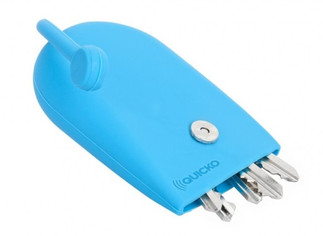The Evolution of Payment: From Plastic to Pioneering Wearables
- Mikołaj Ślęzak

- Aug 19
- 3 min read
Updated: Aug 20
The way we pay has transformed dramatically, moving far beyond the familiar plastic card. While new innovations like the payment ring recently introduced by Polish bank PEKAO S.A. often capture headlines as revolutionary, this renewed push by major banks to popularize wearable payments is a testament to a concept that is anything but new. A closer look at history reveals a long, evolving journey of integrating payment functionality directly into our everyday accessories.
From Magnetic Stripes to Digital Wallets
The foundation of modern payments began with the introduction of the first "modern" credit cards in the 1950s, followed by the groundbreaking magnetic stripe in the 1960s, which enabled electronic verification. The 1990s brought EMV chip technology, significantly boosting security. Today, these traditional cards coexist with widely adopted digital wallets like Apple Pay and Google Wallet, which store card details securely on smartphones, enabling swift, contactless transactions. These digital systems are underpinned by crucial security features like tokenization, which replaces sensitive card numbers with unique, non-valuable digital tokens for each transaction, drastically reducing fraud risk.
Beyond global platforms, localized solutions like Poland's BLIK demonstrate how tailored systems can dominate regional markets. BLIK, deeply integrated with mobile banking, facilitates billions of transactions annually, proving the power of combining convenience, security, and a mobile-first design adapted to local habits.
Wearable Payments: A Hidden History
While payment rings might seem like a recent innovation, their roots trace back decades. The very first patent for a modern payment card, by Roland Moreno in 1975, actually described a memory device connected to a ring – essentially payment-enabled jewelry. The underlying NFC technology, vital for today's contactless wearables, began its development in the early 2000s, with early trials of NFC-enabled phones for payments appearing as far back as 2004 in Japan.
A significant, yet often overlooked, contributor to this field is Quicko, a company within the Verestro Group. As early as 2014, Quicko was a recognized player in the EU market for payment wearables. They produced a diverse range of items, including bracelets, key rings, and even jewelry, all embedded with NFC chips that could be linked to a user's payment card. These pioneering products allowed customers to securely tap and pay, showcasing that the technology and concept for wearable payments were actively being developed and commercialized long before their recent surge in popularity.
Quicko produced a diverse and innovative range of items, including bracelets, key rings, and even jewelry, all embedded with NFC chips. Quicko's pioneering approach even extended to novelty items, such as a children's stuffed toy that discreetly held a payment chip, showcasing their commitment to making payments a secure, seamless part of daily life for every user.
The Future: Diverse and Frictionless
Today's payment landscape continues to diversify. Emerging trends include Buy Now, Pay Later (BNPL) services, offering flexible installment options; QR code payments for quick, app-free transactions; and the slow but steady rise of cryptocurrency as a decentralized payment method. The market for wearable payment devices itself is projected for significant growth, driven by increasing consumer demand for convenience and enhanced security.
In essence, the future of payments is about choice, flexibility, and seamless integration into daily life. The "new" payment ring is a testament not to a sudden invention, but to a continuous evolution, building on the foundational work of innovators who, years ago, envisioned a world where paying was as effortless as a simple tap of what you wear.
The Role of Verestro in the Payment Revolution
In this dynamic payment ecosystem, companies like Verestro are not just observers—they are key enablers. As a leading Polish fintech, Verestro specializes in embedded finance, providing the technological backbone that allows other businesses to integrate financial services directly into their platforms. Verestro’s solutions go beyond just facilitating transactions; they empower a wide range of companies, from banks to retailers, to create their own branded payment products. This approach accelerates innovation by making sophisticated financial technology accessible and adaptable. By providing modular tools for digital wallets, payment cards, and instant payment systems, Verestro plays a crucial role in shaping the future of payments—a future where financial services are seamlessly woven into the fabric of everyday digital experiences.












